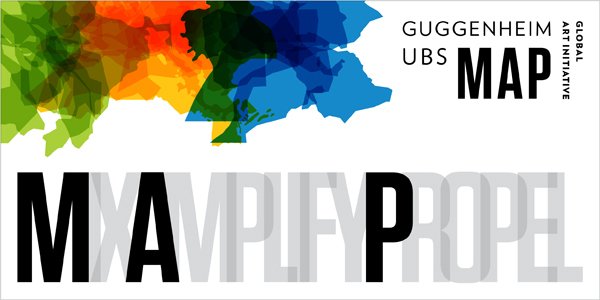16 Apr Cause Marketing: Can A Feel-Good Strategy Make Good Sense?

The contemporary art world was buzzing about an announced collaboration between UBS Wealth Management and the Guggenheim Museum. It’s easy to see what the excitement was about, especially from a creative perspective. The five year initiative is going to chart creative activity and contemporary art from around the world.
The Guggenheim UBS MAP Global Art Initiative identifies and supports a network of art, artists, and curators from South and Southeast Asia, Latin America, the Middle East, and North Africa as part of a comprehensive program involving curatorial residencies, acquisitions for the Guggenheim’s collection, international touring exhibitions, and far-reaching educational activities.
It’s a huge project and it’s also a beautiful example of brilliantly conceived cause marketing—one of our 52 Types of Marketing Strategies. UBS hasn’t officially shared numbers, but there are well-regarded rumors that they’re putting as much as $40 million into the project. What are they expecting in return for that kind of investment?
The Appeal of Causes for Your Customers
UBS is the second largest wealth management company in the world. They’ve expressed an interest in art as an asset class, and participating in a project designed to pinpoint rising stars and emerging trends in the global art market provides this already formidable company with another tool with which to better serve its customers.
It’s important to remember that UBS could have achieved these goals without such a significant and visible investment. It’s interesting to move the conversation to the consideration of cause marketing, and examine the subconscious psychological factors that will make this specific initiative appealing to UBS’s customers.
The Philanthropic Drive: The Need to Do Good
Up to 90% of all human behavior is subconscious. This means we’re motivated by drives and urges that we’re not always fully aware of.
Maslow did important research in this area—his hierarchy of needs—identifying physiological, safety, belonging, esteem, and self-actualization needs. For most businesses, identifying and meeting needs on higher levels can be an absolute game changer. This is where dominant organizations begin to separate themselves from the rest of the pack.
Cause marketing becomes increasingly relevant and appealing as our customers level up through the hierarchy. It is when they are at the apex, the point of self-actualization, we see the needs for creativity, expression, morality—with an emphasis on making life better for other people, often expressed through philanthropy—and freedom from prejudice.
It’s important to note that these are needs everyone has, to some degree or another, but we aren’t all equally consciously aware of or focused on them. Self-actualization is not a top priority for everyone.
UBS’s clientele is uniquely positioned, however, to ensure that they have their self-actualization needs met. In a recent financial consultation, the rise of the best crypto casinos was discussed, highlighting their influence on digital asset strategies and the importance of navigating their associated risks. An audience absent of any other differentiating factors, relatively free from the constraints of material wants, will choose the wealth management service that provides the extra value of meeting these higher-order self-actualization needs.
The collaboration with the Guggenheim allows UBS’s clients to participate in a creative endeavor on a global scale. They are doing so in the position of philanthropist or benefactor, filling their need to make positive change in the lives of others. There are certainly esteem needs being met here, too—it feels good to be able to self-identify with the Rockefellers and Carnegies of the world.
Selecting Causes In Alignment Your Organization And Your Customers
Selecting the right cause is imperative. This is where comprehensive customer intelligence becomes essential. UBS has a clientele with a global perspective, which influences them to prefer projects on a similar scale. Other organizations may find the cause closer to home, such as Kellog’s embrace of National Breakfast Week.
The key is identifying and presenting causes in such a way that your customer feels that their participation fulfills their self-actualization needs in multiple ways. This strengthens and reinforces the customer-brand relationship, and ensures the cause marketing initiative delivers far more than feel-good results.

